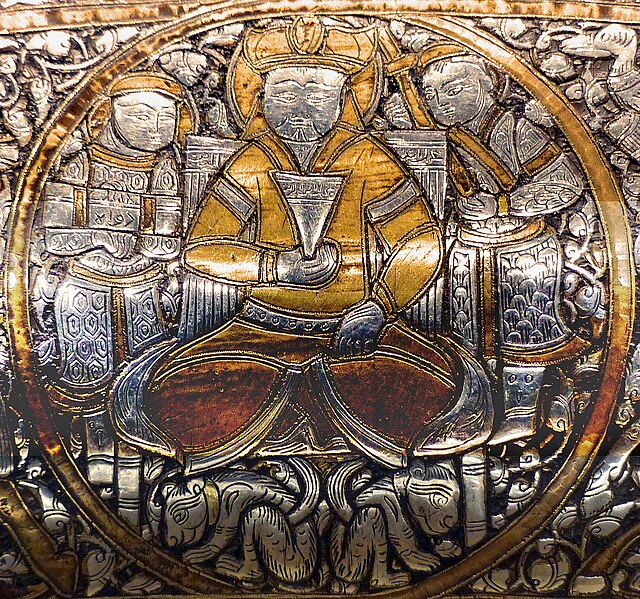The Burji Mamluks or Circassian Mamluks, sometimes referred to as the Burji dynasty, were the rulers of the Mamluk Sultanate of Egypt from 1382 until 1517. As with the preceding Bahri Mamluks, the members of the Burji Mamluk ruling class were purchased as slaves (mamluks) and manumitted, with the most powerful among them taking the role of sultan in Cairo. During this period, the ruling Mamluks were generally of Circassian origin, drawn from the Christian population of the northern Caucasus. The name Burji, meaning 'of the tower', refers to the traditional residence of these Mamluks in the barracks of the Citadel of Cairo.
The funerary complex of Sultan Barquq in Cairo, completed in 1386
Mamluk Sultan Qaytbay ("Mag Caitbeivs Cairi Svltan") by Florentine painter Cristofano dell'Altissimo (16th century), Galleria degli Uffizi
The Citadel of Qaitbay in Alexandria, completed in 1479
The Mamluk Sultanate, also known as Mamluk Egypt or the Mamluk Empire, was a state that ruled Egypt, the Levant and the Hejaz from the mid-13th to early 16th centuries. It was ruled by a military caste of mamluks headed by a sultan. The sultanate was established with the overthrow of the Ayyubid dynasty in Egypt in 1250 and was conquered by the Ottoman Empire in 1517. Mamluk history is generally divided into the Turkic or Bahri period (1250–1382) and the Circassian or Burji period (1382–1517), called after the predominant ethnicity or corps of the ruling Mamluks during these respective eras.
Extent of the Mamluk Sultanate under Sultan Al-Nasir Muhammad
Frontispiece of Sulwan al-Muta’ fi ‘Udwan al-Atba’ by Ibn Zafar al-Siqilli, Mamluk Egypt or Syria, circa 1330.
Horsemen with lances. Nihāyat al-su’l (horsemanship manual) by Aḥmad al-Miṣrī ("the Egyptian"), dated 1371, Mamluk Egypt or Syria.
Enthroned ruler and attendants in the Baptistère de Saint Louis (1320–1340). This is a probable depiction of Sultan Baybars.







